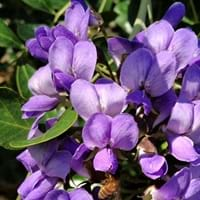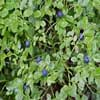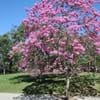Life Span
Perennial
Perennial
Origin
Southwestern United States, Texas
Australia
Types
Not Available
Not Available
Habitat
Arid Habitats, riparian zones
Scrubs, tussock grasslands, Upland savannas
USDA Hardiness Zone
11-15
10-11
AHS Heat Zone
12-10
12-10
Sunset Zone
8, 9, 10, 11, 12, 13, 14, 15, 16, 18, 19, 20, 21, 22, 23, 24
8, 9, 12, 13, 14, 15, 16, 17, 18, 19, 20, 21, 22, 23, 24
Habit
Upright/Erect
Upright/Erect
Flower Color
Purple, Blue Violet
Lemon yellow
Flower Color Modifier
Bicolor
Bicolor
Fruit Color
Brown
Gray Green
Leaf Color in Spring
Dark Green
Blue Green
Leaf Color in Summer
Dark Green
Blue Green
Leaf Color in Fall
Dark Green
Blue Green
Leaf Color in Winter
Dark Green
Blue Green
Leaf Shape
Pinnate
Long Narrow
Plant Season
Spring
Spring
Sunlight
Full Sun
Full Sun
Type of Soil
Clay, Loam, Sand
Loam, Sand
The pH of Soil
Acidic, Neutral, Alkaline
Acidic, Neutral, Alkaline
Soil Drainage
Well drained
Well drained
Bloom Time
Early Spring, Spring, Late Winter
Spring, Late Winter
Tolerances
Drought, Salt, Soil Compaction
Drought
Where to Plant?
Ground
Ground
How to Plant?
Seedlings
Seedlings
Plant Maintenance
Medium
Medium
Watering Requirements
Drought Tolerant
Do not water excessively
In Summer
Lots of watering
Lots of watering
In Spring
Moderate
Moderate
In Winter
Average Water
Average Water
Soil pH
Acidic, Neutral, Alkaline
Acidic, Neutral, Alkaline
Soil Type
Clay, Loam, Sand
Loam, Sand
Soil Drainage Capacity
Well drained
Well drained
Sun Exposure
Full Sun
Full Sun
Pruning
Remove damaged leaves, Remove dead branches, Remove dead leaves
Remove dead or diseased plant parts, Requires little pruning
Fertilizers
All-Purpose Liquid Fertilizer
All-Purpose Liquid Fertilizer, No fertilizers needed
Pests and Diseases
Red blotch
Insects, Root rot
Plant Tolerance
Drought
Drought
Flower Petal Number
Single
Single
Foliage Texture
Medium
Fine
Foliage Sheen
Glossy
Matte
Attracts
Butterflies
Butterflies
Allergy
Poisonous
Asthma, Eye irritation, Headache, Nose Irritation, Throat itching, Vomiting
Aesthetic Uses
Beautification
Showy Purposes
Beauty Benefits
Not Available
Not Available
Environmental Uses
Air purification
Air purification, soil stabilisation
Medicinal Uses
Not Available
Not Available
Part of Plant Used
Flowers, Seeds, Wood
Flowers, Sap, Seeds
Other Uses
Used as Ornamental plant
Used as a dye, Wood is used fore making tools
Used As Indoor Plant
No
No
Used As Outdoor Plant
Yes
Yes
Garden Design
Feature Plant, Shade Trees
Shade Trees, Street Trees
Botanical Name
SOPHORA secundiflora
ACACIA aneura
Common Name
Texas Mountain Laurel
Mulga, True Mulga
In Hindi
Texas Mountain Laurel
Mulga
In German
Meskalbohne
Mulga
In French
Calia secundiflora
Mulga
In Spanish
Texas Mountain Laurel
Mulga
In Greek
Texas Mountain Laurel
mulga
In Portuguese
Texas Mountain Laurel
Mulga
In Polish
Texas Mountain Laurel
Mulga
In Latin
Texas Mountain Laurel
Mulga
Phylum
Magnoliophyta
Magnoliophyta
Class
Magnoliopsida
Magnoliopsida
Clade
Angiosperms, Eudicots, Rosids
Angiosperms, Eudicots, Rosids
Tribe
Not Available
Not Available
Subfamily
Faboideae
Not Available
Number of Species
Not Available
Properties of Texas Mountain Laurel and Mulga Tree
Wondering what are the properties of Texas Mountain Laurel and Mulga Tree? We provide you with everything About Texas Mountain Laurel and Mulga Tree. Texas Mountain Laurel doesn't have thorns and Mulga Tree doesn't have thorns. Also Texas Mountain Laurel does not have fragrant flowers. Texas Mountain Laurel has allergic reactions like Poisonous and Mulga Tree has allergic reactions like Poisonous. Compare all the properties and characteristics of these two plants. Find out which of these plant can be used as indoor plant. If you are interested to decorate your house and garden, find out aesthetic uses, compare them and select the plant which will beautify your surrounding. Along with beautification, try comparing medicinal and edible uses of Texas Mountain Laurel and Mulga Tree and you can choose the plant having best and most benefits.
Season and Care of Texas Mountain Laurel and Mulga Tree
Season and care of Texas Mountain Laurel and Mulga Tree is important to know. While considering everything about Texas Mountain Laurel and Mulga Tree Care, growing season is an essential factor. Texas Mountain Laurel season is Spring and Mulga Tree season is Spring. The type of soil for Texas Mountain Laurel is Clay, Loam, Sand and for Mulga Tree is Loam, Sand while the PH of soil for Texas Mountain Laurel is Acidic, Neutral, Alkaline and for Mulga Tree is Acidic, Neutral, Alkaline.
Texas Mountain Laurel and Mulga Tree Physical Information
Texas Mountain Laurel and Mulga Tree physical information is very important for comparison. Texas Mountain Laurel height is 760.00 cm and width 460.00 cm whereas Mulga Tree height is 550.00 cm and width 370.00 cm. The color specification of Texas Mountain Laurel and Mulga Tree are as follows:
Texas Mountain Laurel flower color: Purple and Blue Violet
Texas Mountain Laurel leaf color: Dark Green
Mulga Tree flower color: Lemon yellow
- Mulga Tree leaf color: Blue Green
Care of Texas Mountain Laurel and Mulga Tree
Care of Texas Mountain Laurel and Mulga Tree include pruning, fertilizers, watering etc. Texas Mountain Laurel pruning is done Remove damaged leaves, Remove dead branches and Remove dead leaves and Mulga Tree pruning is done Remove dead or diseased plant parts and Requires little pruning. In summer Texas Mountain Laurel needs Lots of watering and in winter, it needs Average Water. Whereas, in summer Mulga Tree needs Lots of watering and in winter, it needs Average Water.





